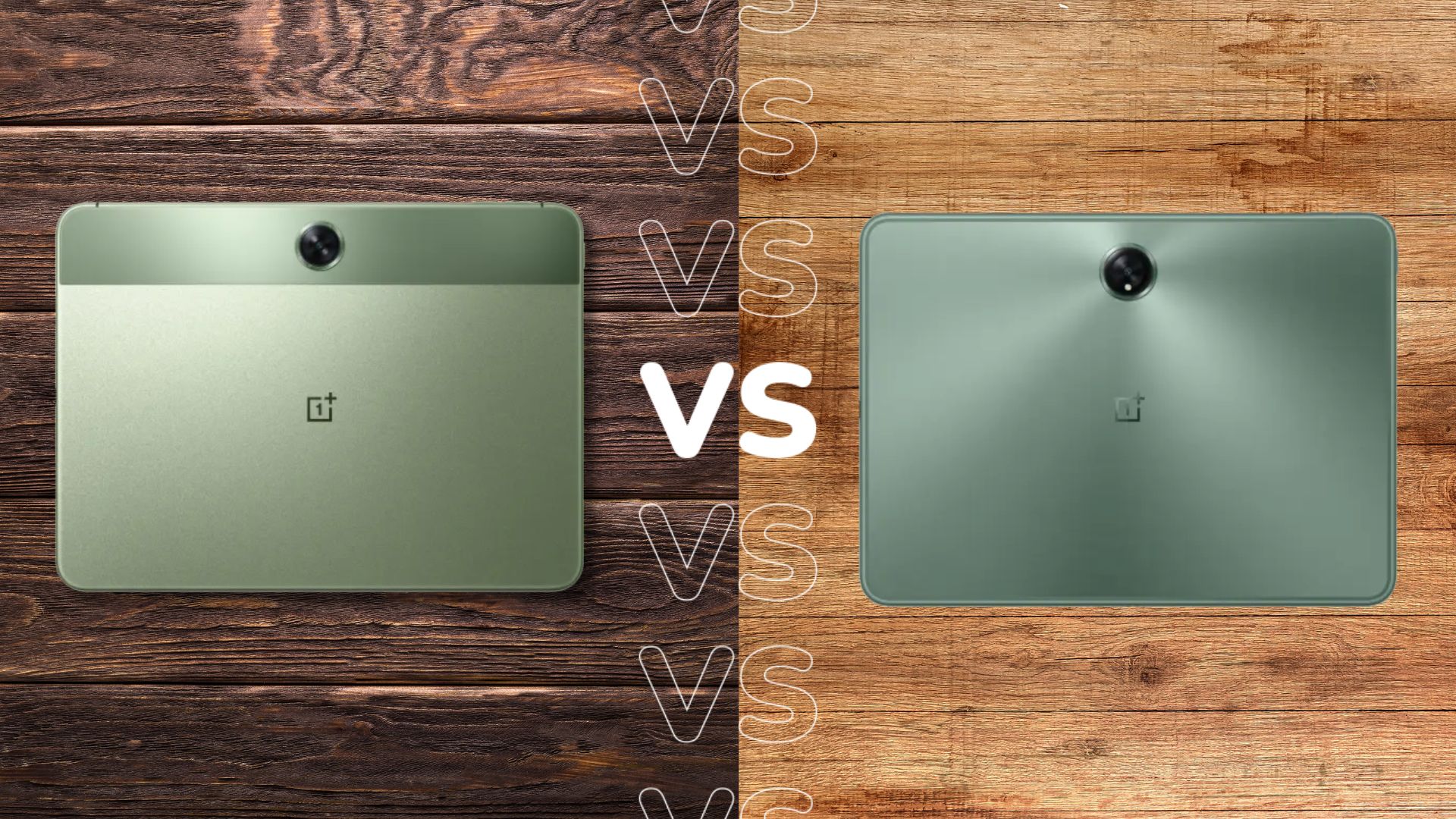Steam Deck OLED vs Asus ROG Ally: What’s the difference?
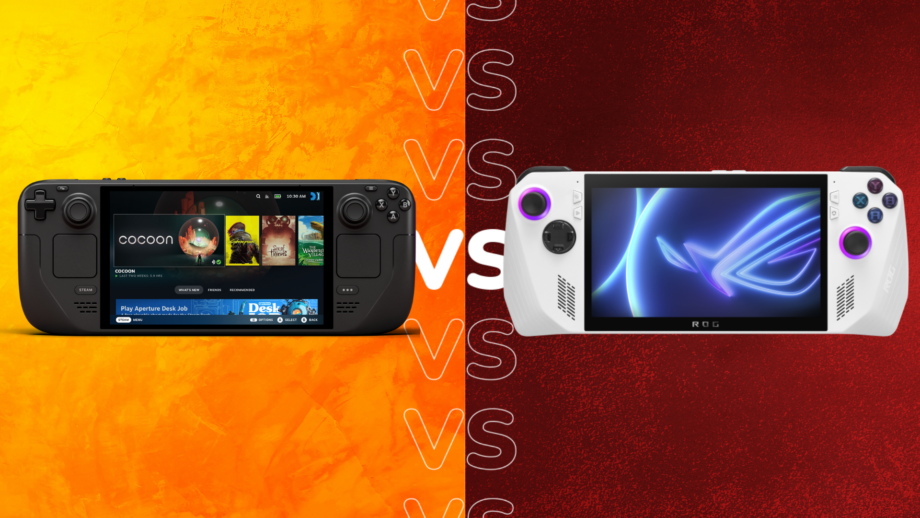
Handheld gaming PCs are the hottest trend in the gaming world, allowing you to play most of your PC games on the go so you’re not confined to your desktop.
The Steam Deck OLED and the Asus ROG Ally are two of the most popular options right now, yet differ in a number of areas. We’ve reviewed both systems extensively, and so are best placed to compare the two devices.
So if you’re stuck between the two, keep reading this comparison guide to find out which handheld gaming PC is the best option for your needs.
Price
The Steam Deck OLED has a starting price of £479, which bags you 512GB of storage space. You also have the option of the £569 model, which upgrades the storage to 1TB and sees the addition of an anti-glare etched glass. The performance remains the same despite which model you opt for.
The Asus ROG Ally is a little more complex. A model with the AMD Ryzen Z1 Extreme is currently available to buy for £599/$599, making it slightly more expensive than the Steam Deck OLED. Asus also launched an entry-level model of the ROG Ally with a less powerful Z1 chip, but that’s now almost impossible to find in stock – it looks like Asus may have already phased it out.
Design and Screen
The Steam Deck OLED and Asus ROG Ally are very similar in terms of their core design. Both have a screen sandwiched by controller pads that feature the same button layout as an Xbox controller. These controller pads are not detachable like they are on the Lenovo Legion Go and Nintendo Switch.
The Steam Deck OLED has two trackpads on the front, helping you to control a mouse cursor when navigating menus. The ROG Ally lacks this feature, which is no issue for action games, but we found it to be problematic for titles such as Football Manager. Both devices offer shoulder buttons, as well as rear pads that allow you to assign macros.
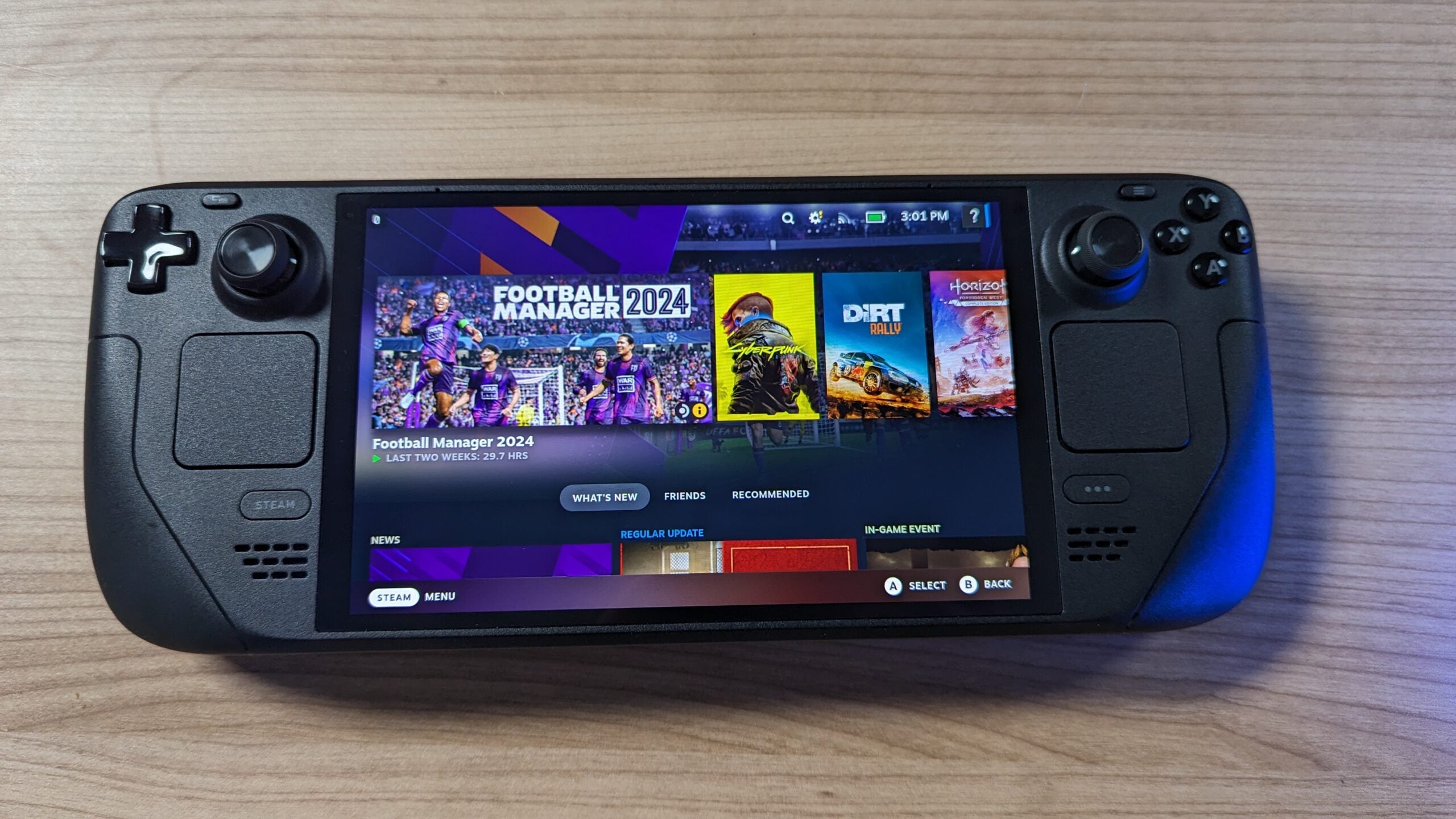

We found the two devices to be reasonably lightweight, with the Steam Deck OLED coming in at 640 grams, and the ROG Ally at 608 grams. Both have a plastic chassis to keep the weight down.
The ROG Ally is the better looking handheld of the two, with a white design and lots of subtle etchings to give it a little more personality. The vents on the rear are even shaped like the Asus ROG logo, while RGB lighting encircles the two joysticks. The Steam Deck OLED lacks personality in comparison, with a bulky black plastic design.
The Steam Deck OLED flaunts a slightly larger screen at 7.4 inches, compared to the Ally’s 7-inch panel. But the more impressive feature is the HDR OLED screen on the Steam Deck, which boosts the contrast and sees an impressive peak brightness of 1000 nits. The ROG Ally screen looks muted and dull by comparison, with a maximum brightness of just 500 nits.
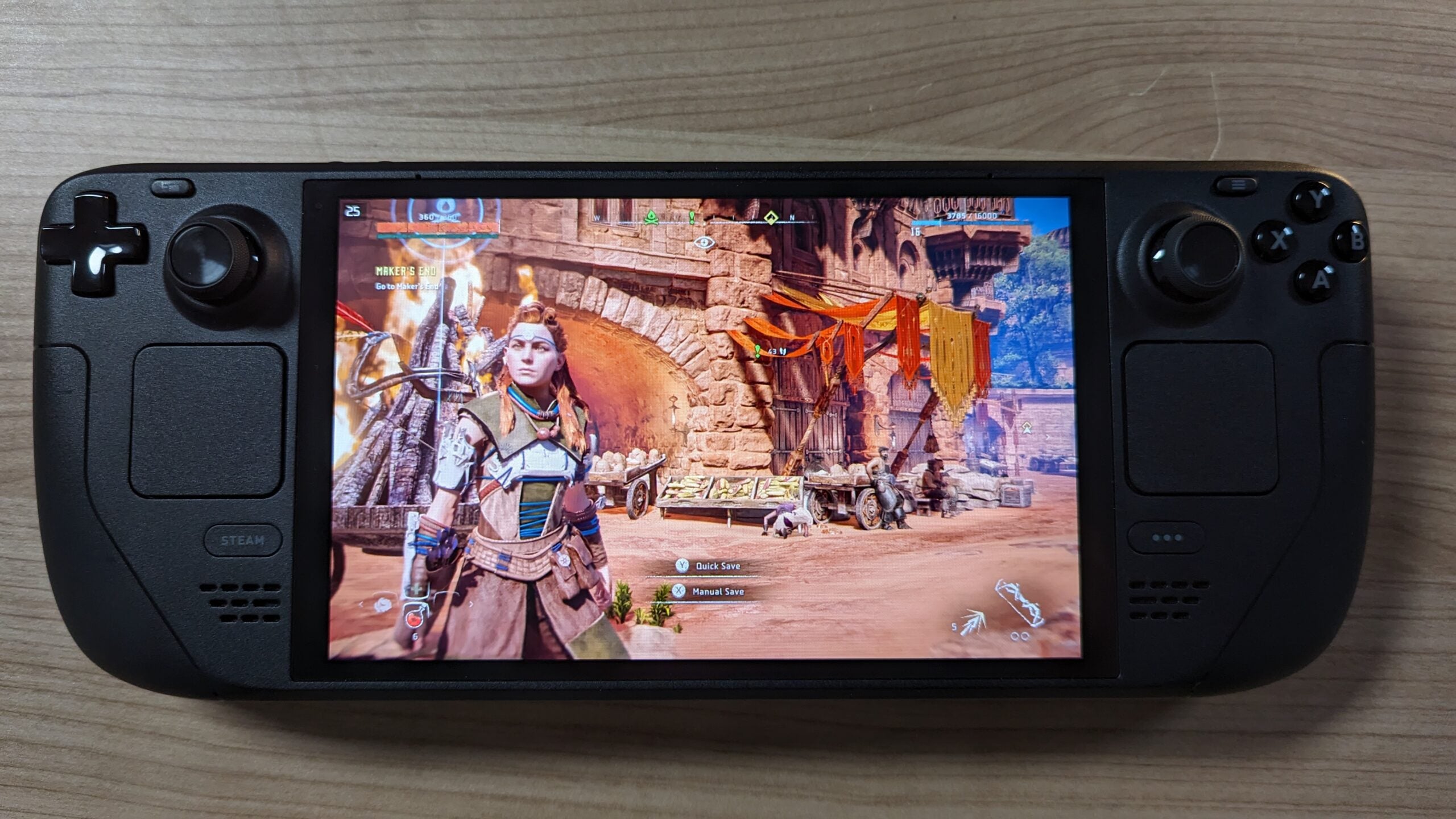
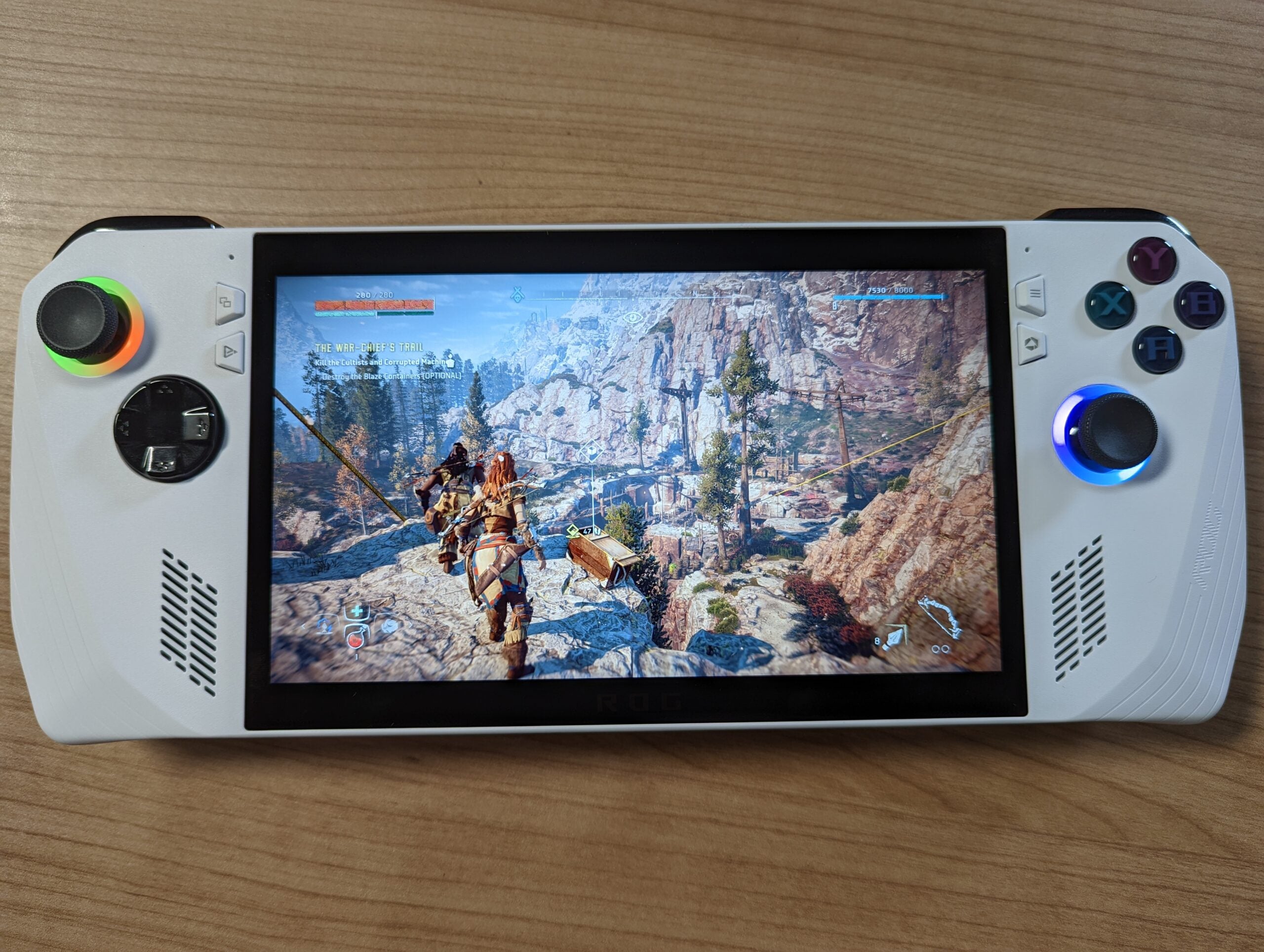
The Asus ROG Ally’s screen does perform better in other metrics. It has a higher resolution of 1080p compared to the Steam Deck’s 800p panel, and also has a faster refresh rate at 120Hz compared to 90Hz. As a result, the ROG Ally screen looks sharper and smoother, but just nowhere near as vibrant as its competitor.
In terms of ports, both portables feature a USB-C connection, headphone jack and microSD card reader. The ROG Ally does one better with its proprietary ROG XG Mobile Interface which allows you to hook up one of Asus’ mobile GPUs to boost performance. That said, I doubt many ROG Ally owners will make use of this niche feature.
Specs and performance
Let’s cut to the chase, which portable offers the most power? The Asus ROG Ally wins this contest, thanks to the AMD Ryzen Z1 Extreme chip, featuring a Zen 4 processor, and RDNA 3 integrated graphics. For comparison, the Steam Deck OLED has an AMD chip with a Zen 2 processor and RDNA 2 integrated graphics.
Our benchmark results show the extent of the performance gap, with the Asus ROG Ally offering a 10fps boost for Horizon Zero Dawn and a 13fps advantage for Cyberpunk 2077. That may not sound like a big difference, but it ensures a smoother performance for modern games while also ensuring the most demanding titles are still playable.
Both devices come with 16GB LPDDR5 RAM and 512GB SSD storage, although the Steam Deck OLED allows you to pay more for a 1TB configuration if you’re craving more install space.
However, Asus has had to make compromises to achieve such a high performance for a portable. With its TDP (Thermal Design Power) ranging between 9 to 30 watts, its processor is incredibly power hungry. For comparison, the TDP of the Steam Deck OLED chip comes in at just 4 to 15 watts.
Our battery drain test shows that this makes a big impact on stamina. When running Horizon Zero Dawn, with the Asus ROG Ally set to Performance mode, we could only get the portable running for up to 90 minutes. Switching the device to turbo mode saw the stamina drop even further to 60 minutes.
As for the Steam Deck OLED, we were able to keep it running for two hours with the performance settings up to the max, and up to three hours when reducing the brightness and reducing the performance to a steady 30fps. This shows that the Steam Deck OLED is the clear winner when it comes to battery life, while the ROG Ally reigns supreme for performance power.
Software
It’s important to highlight the software differences for these two gaming handheld systems, as it makes a big difference to the overall experience.
The Asus ROG Ally is based on Windows 11, which is a pain to navigate on a 7-inch touchscreen without a keyboard and mouse. Asus has at least pre-installed its own software to make it easier to jump into your games, but the process of installing games on the device in the first place can be quite irksome. However, this does at least have the advantage of being able to access any PC storefront, or cloud service such as Game Pass and GeForce Now.
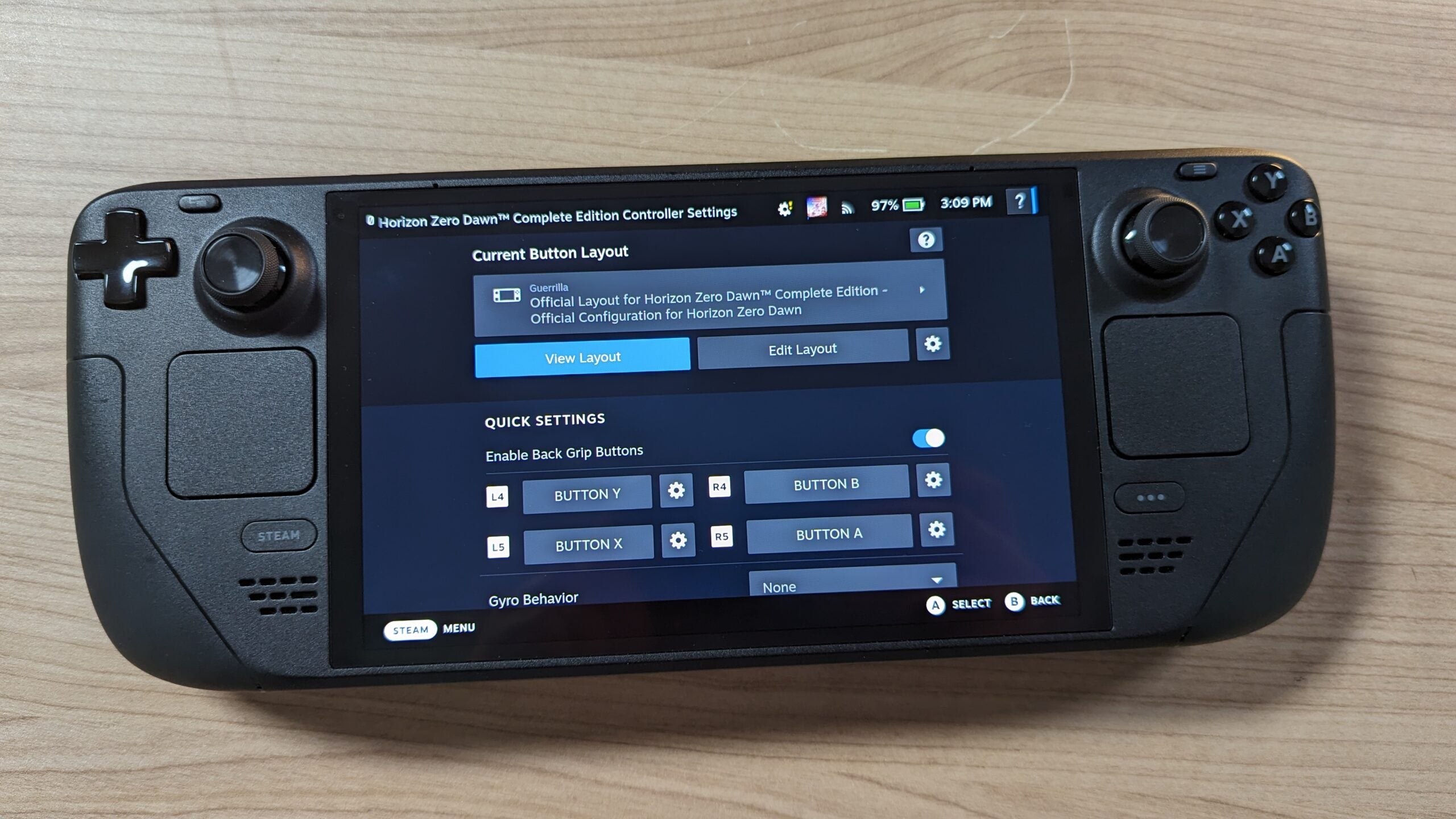
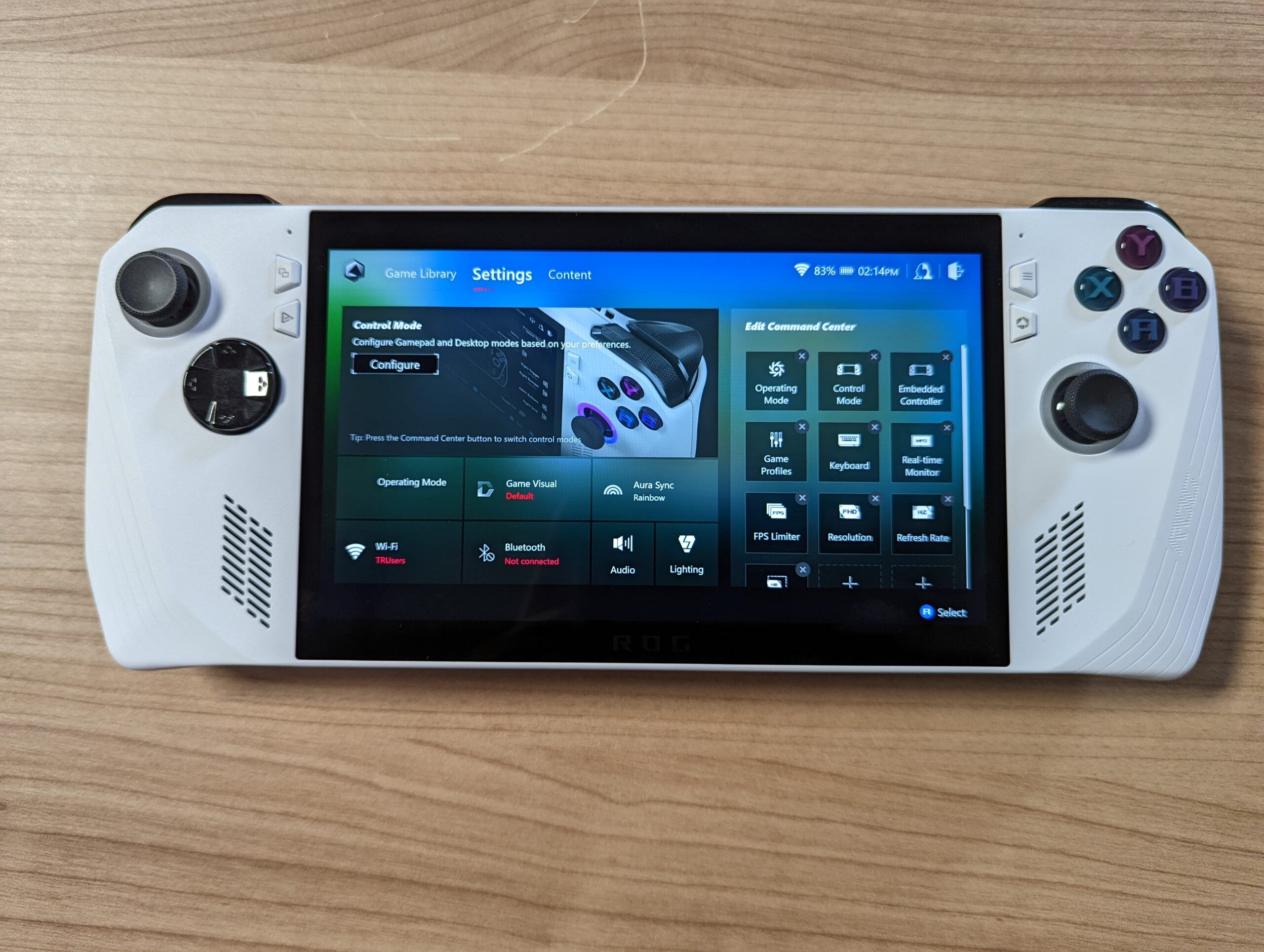
The Steam Deck OLED instead uses its own Linux-based SteamOS software, which is extremely slick. It’s incredibly easy to install your collection of Steam games, with all of the titles popping up on the homescreen as they do on a console. The only limitation here is if you want to explore beyond the Steam ecosystem. It’s possible to install games from third-party storefronts using the Linux desktop, but it’s tricky to navigate so may be off-putting for those unfamiliar with the operating system.
If you’re content with sticking to Steam games, then the Steam Deck OLED is the no-brainer choice. But those who’d spend more time with Game Pass and the Epic Games Store may be better off sticking with the Asus ROG Ally.
Verdict
The Steam Deck OLED and Asus ROG Ally are arguably the very best value handheld PC systems on the market, so you should be happy with either purchase.
We think the Steam Deck OLED is the better option for most people, as it has a fantastically vibrant OLED screen, superior battery life and a more affordable price point.
That said, you may well be tempted by the Asus ROG Ally instead if you’re craving a higher performance ceiling. And while Windows is a pain to navigate on a handheld system, it does at least provide easier access to third-party services such as the Epic Games Store and Xbox Game Pass.



